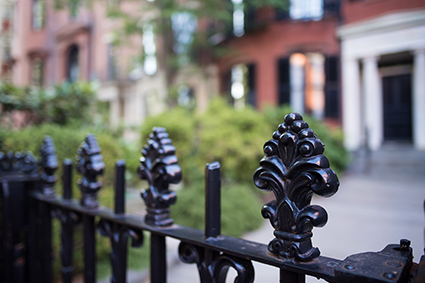As we age, our priorities and preferences change.

We may no longer enjoy cleaning the large house we raised our families in, we may start to feel a little lonely or isolated without the hustle and bustle of earlier years, and the lawn may feel like more of a hassle than it once did. Deciding whether or not to make a change isn’t always easy, but informing yourself of your options will help ensure that the fear of the unknown doesn’t keep you from making a choice that would help you feel lighter and happier. Senior communities are an excellent option for independent, self-sufficient seniors that want a simpler lifestyle, fewer responsibilities, and the freedom to enjoy retirement.
Here’s an independent living guide to answer the question “what is independent living?” and help you consider if an independent living lifestyle might be right for you.
What is Independent Living?
Independent living, also called senior living or 55+ living, refers to an lifestyle for seniors that maintains an active, self-sufficient quality.

Senior communities help older adults maintain this type of lifestyle by providing an environment where seniors can live among peers and take advantage of amenities, programs, and activities specifically designed with seniors in mind.
Seniors that choose these living environments are self-sufficient and don’t require the level of senior care provided at assisted living facilities.
Types of Independent Living Communities
While all senior living communities are custom designed neighborhood for seniors, there are 55+ living options that take many different forms. Here are a few examples of the various types of senior living options:
- Gated neighborhoods
- Religious-specific communities
- RV parks
- Resort & golf communities
- Singles-only communities
- Luxury communities
All of these types of residences will generally have a layout, atmosphere, and amenities that cater to the 55+ age group, rather than young single people or families.
Benefits of Independent Living Communities
Senior living communities are excellent options for older adults that would prefer less home upkeep, greater social interactions with peers, and increased physical and mental stimulation.

Senior living communities are designed to be senior-friendly. Every 55+ community varies in the amenities offered, but they typically provide dining services, light housekeeping, activities and programs, and transportation services. Many communities have exercise facilities and live-in managers. They do not offer health care services or assistance with activities of daily living. Many 55+ community residents use in-home caregivers to assist with additional senior care needs.
Gated neighborhoods and onsite security provide peace of mind for people who want added physical protection. Some enjoy living among people in their age group without children or younger people as neighbors. Another perk is that expenses are simplified when one moves to a senior community—insurance, utilities, taxes, and other housing expenses are all wrapped up in a single fee. Additionally, landscaping and property maintenance—like mowing the lawn and raking leaves—are no longer on the to-do list. Many “snowbirds” choose 55+ communities as their primary residences so that they can have the freedom to enjoy retirement and travel without the worries associated with maintaining larger homes.
It’s generally agreed upon that knowing that you are part of a community of peers that support and care about you exceeds all other benefits of independent living.
When is it Time to Consider a Change??
Everyone is different with unique circumstances and aging experiences, making it difficult to say precisely when the right time is to start considering a senior community. However, there are some questions that you can ask yourself to see if it might be time for you to think about a change.
Is your house in need of more upkeep or minor repair?
If you notice that your home isn’t in the pristine state that it was once, it could mean that you don’t have the ability or desire to maintain it that you used to have. Downsizing implies that there will be less cleaning, repairs, and maintenance to tend to and pay for, and you’ll have more time and money to enjoy your life. It may also be a good idea to sell your home before it begins to lose value. As a bonus, many senior communities include housekeeping and laundry services.
Are you tired of cooking?
Grocery shopping, cooking, and cleaning up after the meal can make for a big event, especially when you’re preparing a meal just for yourself and maybe a partner. Many seniors slide into eating takeout or prepared meals that do not stack up nutritionally. Senior communities often offer delicious, nutritious meals onsite.
Do you feel a little isolated?
55+ communities are the perfect environments to make new friends that you have lots in common in with. All of your neighbors are in your same age range, many are retired, and the activities and programs are customized for older adults.
Is transportation a challenge?
If driving is becoming difficult or inconvenient, a senior living might be an excellent option to consider. Many have services right onsite, like banks, salons, and stores. Others provide transportation to and from errands and appointments.
Considerations When Choosing Community
Choosing the right community is a big decision. When beginning to consider your senior living options, start by narrowing down the desired location, perhaps near your current home or relatives, and research reviews to see what residents and their families say about their experiences. Here is some information to seek out when you’re weighing your senior living options that a community brochure won’t likely include.
- What are the residents like? Are they the types of people you’d like to have as your neighbors and invite over for dinner? Do they share similar interested? Depending on your schedule, you may end up spending a lot of time with fellow residents, and it’s important to feel like you would enjoy the company of your neighbors.
- Do the amenities meet your needs and preferences? Envision your ideal independent living lifestyle and make a list of the most important amenities to you. Keep the list handy to refer to when you research or visit a community.
- What are the rules? HOA bylaws may put certain stipulations on what you can and can’t do in a particular community—ike flying an American flag, painting your mailbox, or hanging a swing from the tree in your front yard. Be sure to find out if a community has rules that are deal-breakers for you.
- Does the community have a “sinking fund” or reserve fund for major repairs and maintenance in the HOA budget? Money in this type of fund is set aside for things like roof-replacement, painting community buildings like clubhouses, major community landscaping projects, etc.
- Who owns the land adjacent to the community and what are their plans for it? You may not want to move into a quiet neighborhood only to find out there will soon be a major shopping center next door.
It’s important to remember that while a community might look good on a brochure or a web-based independent living guide, it could feel very different in person. It’s essential to visit a community a few times to make sure that it feels like a place you’d like to live.